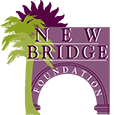When an individual is struggling with an addiction to drugs or alcohol, the first step on the road to recovery may be medically supervised detox. Without this critical step, individuals may place themselves at risk for relapse either during or immediately after treatment. Detox is particularly important when a person is experiencing addiction to oxycodone, but before beginning detox, it is important that they understand what to expect in terms of oxycodone withdrawal symptoms.
New Bridge Foundation® provides compassionate, effective treatment that can lead people struggling with oxycodone abuse toward a healthier life. With over 50 years of experience, New Bridge Foundation® has been named one of America’s “Best Addiction Treatment Centers” for the past three years, per a survey conducted by Newsweek Magazine. If you or someone you care about is seeking an affordable painkiller addiction treatment program in California, reach out to New Bridge Foundation® at 866.772.8491 today.
Signs of Oxycodone Abuse
Oxycodone is an effective pain relief medication that can lead to addiction when misused. It is a prescription opioid found most commonly in brand-name medicines like OxyContin and Percocet. Its extended-release forms can be useful for those needing around-the-clock, long-term pain medications, especially if they cannot use other pain medications. However, due to its extremely addictive nature, OxyContin should only be prescribed when absolutely necessary.
Addiction to oxycodone is a serious risk and tends to occur quickly. However, it can be difficult to determine when a person’s oxycodone use has crossed the line into oxycodone abuse. Some of the signs include the following:
- Taking larger doses of oxycodone than prescribed
- Engaging in risky behaviors while under the influence of oxycodone
- Growing tolerant to the effects of oxycodone over time
- Using oxycodone for recreational purposes
- Experiencing cravings and intense urges to use more oxycodone
- Taking longer periods between doses and gradually increasing dose sizes
- Withdrawing from friends and family members
- Exhibiting signs of mania or hyperactivity when using the drug
- Feeling drowsy, sluggish, or sedated for long periods after taking a dose
If you or someone close to you is exhibiting any of these signs of oxycodone abuse, it may be time to seek professional treatment.
Oxycodone Withdrawal Symptoms
When experiencing oxycodone withdrawal symptoms, the intensity and severity will depend on several factors. These include, but are not limited to, the following:
- Length of oxycodone abuse
- How an individual ingests the drug
- Frequency of use
- Any underlying mental or physical health conditions
- Use of oxycodone with other substances
Once an individual begins the process of detoxification, there is a range of oxycodone withdrawal symptoms they may experience. These may include:
- Diarrhea
- Muscle aches
- Vomiting
- Runny nose
- Fatigue
- Anxiety and depression
- Mood swings
- Increase in heart rate
More severe symptoms include a drop in blood pressure and increased blood glucose levels.
The Oxycodone Withdrawal Timeline
As you begin recovery, it is important that you understand the oxycodone withdrawal timeline. This will differ for every individual experiencing oxycodone withdrawal symptoms, but the following will give you an idea of what to expect:
- 1-2 days – An individual will typically begin to experience the beginning of withdrawal 8-12 hours after their last use of oxycodone. During this time, individuals tend to experience sweats, body aches, loss of appetite, and overall restlessness. Relapse most commonly occurs at this stage, which is one of the many reasons it is vital to detox with professional supervision.
- 3-5 days– This window is when the worst of the oxycodone withdrawal symptoms take place. Cramps and shakes tend to occur along with vomiting and nausea.
- 6-7 days– During this time, the physical symptoms are starting to let up. However, psychological symptoms start to become worse. Anxiety and depression tend to occur alongside the remaining physical symptoms.
- 8+ days– After eight or more days, the individual’s system should be free of oxycodone. While the detox process is complete, feelings of guilt and remorse remain. This is also a period in which the risk for relapse is high.
Help for Oxycodone Withdrawal
The good news is that there have been breakthroughs regarding assisting individuals with the uncomfortable symptoms that result from an oxycodone addiction, Using medication-assisted treatment (MAT), which is an evidence-based practice, doctors are able to prescribe medications such as Buprenorphine and Suboxone to assist clients in managing withdrawal symptoms safely, thus greatly reducing the occurrence of relapse.
Due to the efficacy of these medications, most treatment facilities providing detox services will ensure that their clients are evaluated by a physician who can prescribe these medications.
Learn More at New Bridge Foundation®
When it comes to the highest-quality substance abuse treatments available, New Bridge Foundation® is here to help. We provide a variety of programs and services for those struggling with addiction.
Our programs include the following:
- Detoxification
- Short-Term Residential Rehab (Helios)
- Short-Term Outpatient Rehab (Helios)
- Long-Term Residential Rehab (START)
- Free Aftercare for Life
To learn more about how New Bridge Foundation® can help individuals experiencing oxycodone addiction, reach out using our convenient online form or call 866.772.8491 today.







